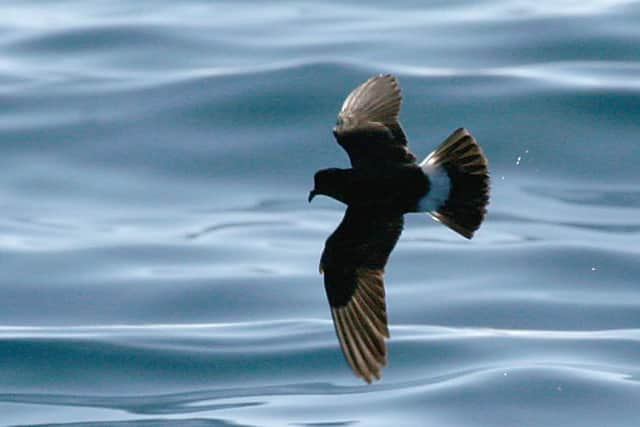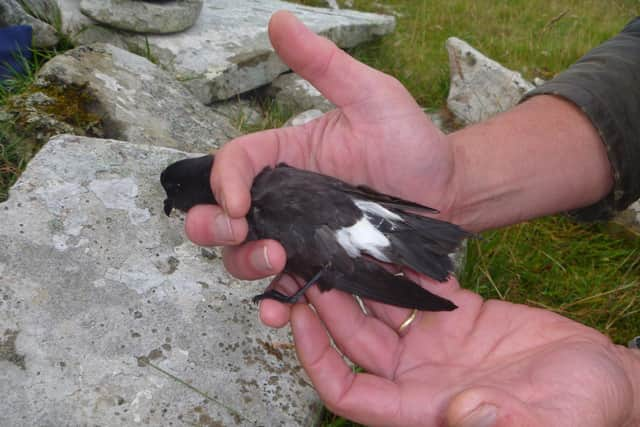Storm petrel tagging study reveals secret life of tiniest seabird
The findings come from a ground-breaking study that used satellite tags to monitor the activities of storm petrels over a number of years.
Experts say the data provides a unique insight into the behaviour of the tiny seabirds, which are mainly active at night, and offers important lessons about how they might be protected.
Advertisement
Hide AdAdvertisement
Hide AdAn adult storm petrel is not much bigger than a sparrow and weighs just 25g to 30g – the same as three £1 coins.


Scotland and the UK are a key stronghold for the amber-listed species, with around 2.5 per cent of the global population – almost 11,000 pairs – based on the isle of Mousa in Shetland.
Researchers built nest boxes on Mousa, a designated European Special Protection Area with storm petrels as a named feature, allowing them to easily capture, tag and release the birds.
GPS tags weighing less than 1g were fitted to the tail feathers of 42 individuals, which were then tracked over four breeding seasons.


Data showed foraging trips usually lasted from one to three days and ranged up to 300km from the nests.
However, one bird – which may have been blown off course in a storm – travelled almost 400km to Norwegian coast and then stunned researchers by returning its nest in just 24 hours.
Researcher Mark Bolton said: “This was ambitious research and provides the most comprehensive insight into how these tiny birds use our vast marine environment to feed and raise their young.
“The new insights about their behaviour demonstrate the value of fundamental science as well as providing an amazing window into the travels of our smallest seabird.”
Advertisement
Hide AdAdvertisement
Hide AdHead of marine policy at RSPB Scotland Alex Kinninmonth added: “Embracing this game-changing technology has allowed us to build a more complete picture of the lives of these elusive birds.”
Experts say the insights could help shape future work to safeguard the birds.
A message from the Editor:
Thank you for reading this story on our website. While I have your attention, I also have an important request to make of you.
The dramatic events of 2020 are having a major impact on many of our advertisers - and consequently the revenue we receive. We are now more reliant than ever on you taking out a digital subscription to support our journalism.
Subscribe to scotsman.com and enjoy unlimited access to Scottish news and information online and on our app. Visit https://www.scotsman.com/subscriptions now to sign up.
By supporting us, we are able to support you in providing trusted, fact-checked content for this website.
Joy Yates
Editorial Director
Comments
Want to join the conversation? Please or to comment on this article.